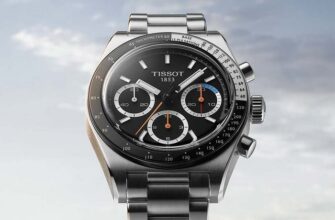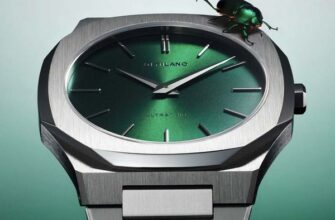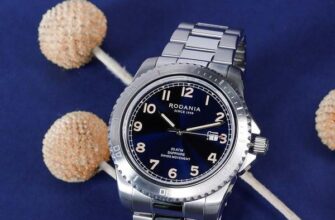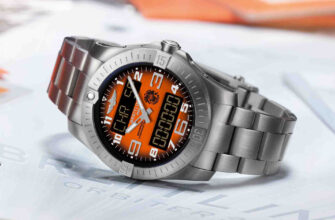As you know, there is no sea in Switzerland. But it is no secret that the world's best watches for divers and yachtsmen are produced by Swiss companies. A worthy place among them is occupied by Delma, a watch company founded almost a century ago (in 1924) in the town of Lengnau (Canton of Bern) by brothers Adolf and Albert Gilomen. Then the company was called A. & A. Gilomen SA, and in 1966 received the current name - Delma Watch Ltd., after the name of one of the early models. However, the word Delma appeared on the watches of this company much earlier, back in 1933.
A bit of history
Delma was born as a family business and remains so to this day. Independence has always been important for brand owners, and this course has largely determined its strategy. Not part of powerful transnational groups, the company avoids overly flashy models, relies on traditional values and systematic development. At the same time, of course, modern technologies are used, proven materials and flawlessly proven components (including mechanisms such as ETA, Sellita, Ronda, etc.) are used, steady quality control is practiced at all stages of watch creation - from design to the final assemblies. It is worth noting that since 1993 the brand has not used nickel - this is how care is shown for people for whom this metal is allergenic.
The Delma catalog contains both basic configurations and quite complex ones. But the company does not strive to “raise” prices at all: the watches of this brand belong to the middle price group. And, by the way, they sell well literally on all continents.
ocean lords
Delma turned to the marine theme in 1969: then the first model of the brand with increased water resistance, Periscope, was released. It was followed in 1975 by professional diving watches Shell Star and Quattro. Since then, watches for diving and yachting can be considered the main specialization of the brand. This is not an accident - the current owners of the company, the Kessler family, are "sick" of the sea. There is a lot of evidence of this: this is a personal friendship with the legendary Australian yachtsman Nick Moloney, who set 15 world records and circumnavigated the world three times.
And, of course, modern "sailor" models, among which Blue Shark (2011, water resistance 3000 m) and Blue Shark III (2019, 4000 m) should be noted; and, launched in 2017, an official partnership with the IMOCA Ocean Masters - International Monohull Open Class Association, the International Association of one-hull open-type sailing vessels, one of the fastest in the world. And the first precedent of this cooperation took place a year earlier: in 2016, Delma acted as the title timekeeper of the transatlantic regatta New York (USA) - Vendée (France).
Time to Perform - It's time to perform - this is the corporate slogan of Delma. Ocean Masters - Masters of the Ocean - this is how these words are translated, and this is how (only in a slightly modified format) the Delma Oceanmaster line launched in 2017, which is part of the Racing collection, is called. The main “genre” of these watches is yachting, although we will soon see that the matter is by no means limited to this specialization.
But for now, our focus is on the Delma Oceanmaster Tide watch, which is equipped with a tide indication feature that is rarely found in haute horlogerie.
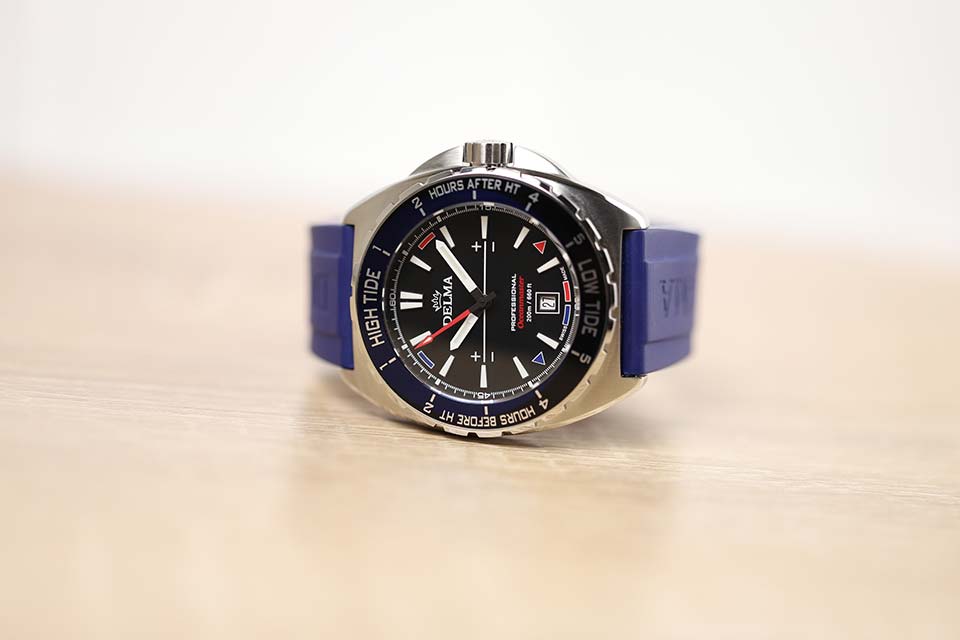
Three hands, date, high water, low water
This is the functionality of the Delma Oceanmaster Tide model, which we will consider in detail.
The watch is powered by a high-precision and highly reliable Swiss ETA F06.111 quartz movement with a battery life of 68 months. As befits quartz, the second hand moves in jumps at intervals of one second, and when the charge drops critically, it jumps to jumps of 4 seconds, signaling that it is time to take care of replacing the battery.
The mechanism provides an indication of hours, minutes and seconds (central hands), as well as the date (in the aperture at 6 o'clock). The cushion-shaped watch case is made of 316L stainless steel, its diameter is 44 mm, thickness is 12 mm. The case is water-resistant up to 7 m. The crown is fluted, protected, screw-down, three positions: recessed state - neutral, advance by one click (after unscrewing) - date correction, advance by two clicks (also after unscrewing) - "stop second" and installation of arrows.
We note here that, firstly, one should not forget to screw the crown after the end of manipulations with it and, secondly (running a little ahead), manual winding is also available in the variant on a mechanical caliber with automatic winding - it is with the screwed-down crown. We also note that the crown, contrary to expectations, does not bear the brand logo - a bit of a pity, although it does not have much practical significance.

Glass - sapphire, with anti-reflective coating. The case back is engraved with a striking image of a group of sailboats, inspired by Delma's collaboration with IMOCA Ocean Masters. The watch comes on a blue rubber strap with a classic steel buckle.
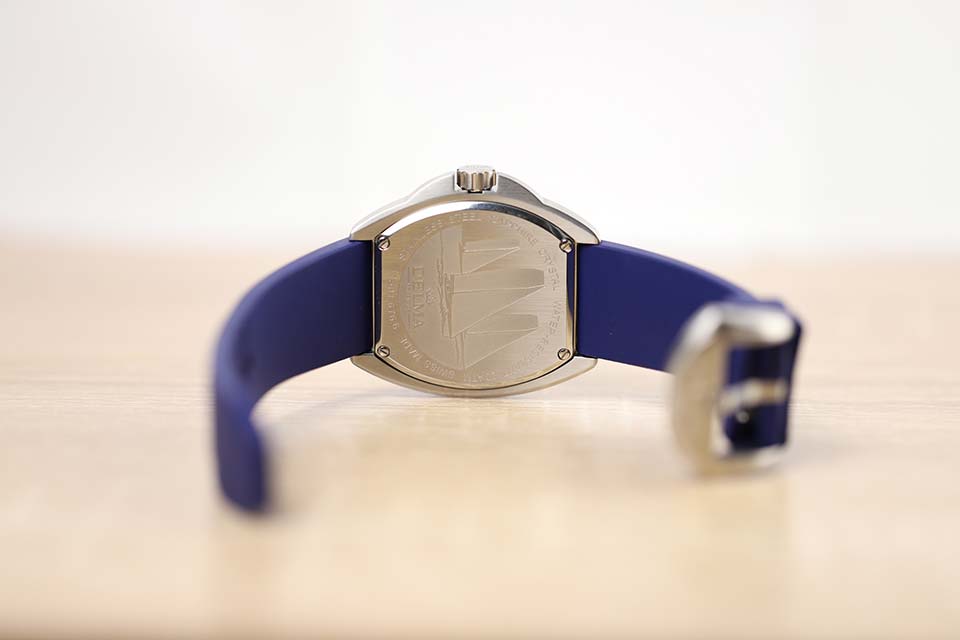
Massive markers and hands (the same massive hour and minute, plus a triangular second tip) against the background of a black dial are clearly visible in any light, as well as in its absence - thanks to the luminescent coating. However, this is rather in theory: in reality, the hour and minute hands are clearly visible, even in complete darkness; the marks are noticeably dimmer, and the movement of the second hand is not visible at all. This is a little annoying, but generally acceptable: the model allows you to find out the current time in complete darkness with an accuracy of up to a minute without problems, and such a need arises not so often in real everyday life.
In general, the model fully complies with the requirements of the international diving standard ISO 6425, including due to the presence of a unidirectional (counterclockwise) rotating bezel. But it is necessary to speak about it especially, since it is he who determines the specific essence of the model - the indication of ebbs and flows.
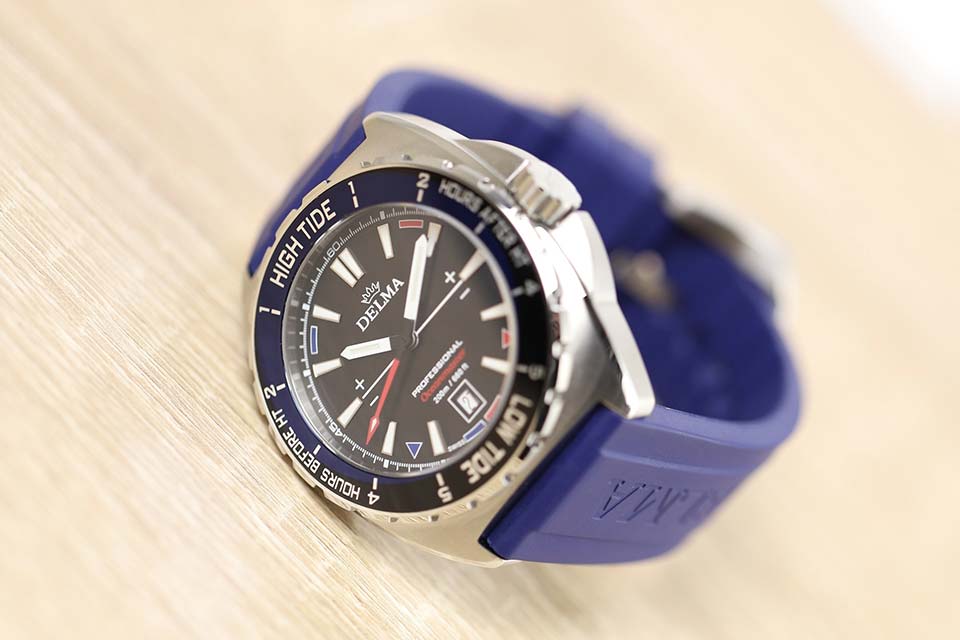
First of all: this fluted bezel is made of anodized aluminum, in blue and black. And most importantly - its markup. It includes the designations "HIGH TIDE" (i.e. high water - high tide), "LOW TIDE" (respectively, low water - low tide) and marking the number of hours left before high tide (on the left side) or passed after it ( on the right), 6 hours for each period.
How to enable this feature? Actually - nothing complicated. The only thing that is needed "from the side" is a table of tides in the place on the globe that interests us.
So, we have a table before our eyes. Now we turn the bezel so that the “HIGH TIDE” point on it is aligned with the time of the next high tide. Let's say we're doing these things on the morning of June 16, 2022. According to the table, the highest tide point occurs at 8 o'clock. Here, against the “8” mark on the dial, we set the aforementioned bezel point. After that, the hour hand will show us how much time has passed after high tide, then it will reach low tide and will show how much time is left until the next high tide.
Please note: The 6-hour period (the interval between high and low tide) is standard, but can sometimes be violated. Therefore, the position of the bezel should not be left unchanged "forever" - it is better to check the table from time to time.

Not only ebbs and flows
We mentioned above that the functionality of the Delma Oceanmaster watch is quite wide. This also applies to the considered "tidal" model. Its dial has a horizontal line with "+" and "-" signs, respectively above and below the line, and markers at the positions "1.30", "4.30", "6", "7.30" and "10.30", red and blue. These are the functions of tactical planning and sail points. How beautiful!
But it is already quite difficult, so we will explain briefly.
Why do we need a line between the marks "9" and "3", and even pluses and minuses above and below it? The fact is that in the race of sailing ships the start is extremely important. The indicated line just symbolizes the starting line, and the pros and cons advise in which direction it is better to start: from the starting ship or, conversely, in its direction. This is determined as follows: 1) we hold the clock horizontally, and so that the direction "12 - 6" coincides with the direction of the wind; 2) we plan a course from the starting vessel to the nearest turning mark (buoy); 3) if the course line fell into the sector between the marks "12" and "9" on the dial (marked with pluses), then we start towards the sign, if in the sector between "9" and "6" (marked with minuses) - towards the starting ship .
Well, what about the sail points, are they red and blue markers? It is even more difficult with them: you need to be able to handle the sails ... However, you can understand the principle. Point your watch at the 12 mark in the direction of your yacht (congratulations on owning a yacht, too). If the wind blows on your forehead - this is called a headwind, it is impossible to go this course, the sails will rinse. Either change course, or lower sails, drop anchor, wait. The wind blows at the marks "10.30" or "1.30" - this is a badewind. In the marks "7.30" or "4.30" - this is the backstay. In the mark "6" (that is, in the stern) - this is a jibe. Well, there are still directions to the marks "9" and "3", they are already visible, therefore they are not marked separately; such a side wind is called gulfwind.
Very beautiful words, aren't they? That's all, it remains only to set the sails in accordance with which of these words turned out to be relevant ... In some cases, you can still remove the staysail and set the spinnaker ...
Well, if all this for you (as well as for the author of these lines) is nothing more than a theory, and even then it is vague, do not be discouraged. The watch is very good just for wearing, especially suitable for young and energetic, besides, it attracts attention with its unusual functionality.

